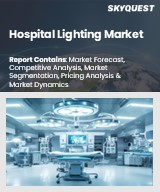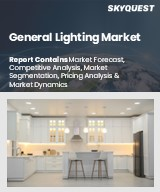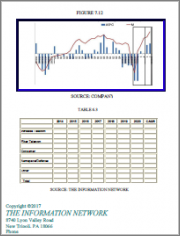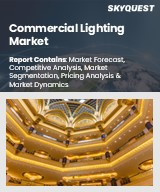
|
시장보고서
상품코드
1570836
세계의 안티글레어 조명 시장 : 최종 사용자별, 제품 유형별, 용도별, 유통 채널별 - 예측(2025-2030년)Anti Glare Lighting Market by End User (Commercial, Industrial, Residential), Product Type (Fluorescent Anti Glare Lighting, Halogen Anti Glare Lighting, HID Anti Glare Lighting), Application, Distribution Channel - Global Forecast 2025-2030 |
||||||
안티글레어 조명 시장의 2023년 시장 규모는 14억 3,000만 달러로 평가되었고, 2024년에는 14억 9,000만 달러로 추정되며, CAGR 5.88%로 성장할 전망이고, 2030년에는 21억 4,000만 달러에 달할 것으로 예상됩니다.
눈부심을 줄이고 시각적 편안함을 높이기 위해 설계된 안티글레어 조명은 사무실, 교육기관, 병원 및 도시 지역의 야외 조명과 같은 분야에서 점점 더 중요해지고 있습니다. 이러한 조명 솔루션의 필요성은 시인성을 향상시키고, 눈의 피로를 완화하며, 특히 전자 화면이 보급되는 다양한 환경에서 집중력과 생산성을 높일 필요성에 의해 초래됩니다. 용도는 안전성과 쾌적성이 최우선인 교통기관이나 공공 인프라 뿐만 아니라 주택이나 상업공간에서 산업환경까지 다양합니다. 최종 용도의 범위는 환경 및 노동 위생 전략의 핵심 요소로 안티글레어 기술을 채택하는 제조업체, 서비스 제공 업체, 시설 관리자 및 정부 기관으로 확장됩니다.
| 주요 시장 통계 | |
|---|---|
| 기준년(2023) | 14억 3,000만 달러 |
| 추정년(2024) | 14억 9,000만 달러 |
| 예측년(2030) | 21억 4,000만 달러 |
| CAGR(%) | 5.88% |
시장 성장은 주로 에너지 효율적인 조명 솔루션에 대한 수요의 급증과 노동 안전 및 환경 지속가능성에 대한 엄격한 정부 규제의 영향을 받고 있습니다. LED 기술 혁신과 스마트 조명 시스템과 같은 기술 발전은 효율성 향상과 맞춤화를 제공함으로써 잠재적인 기회를 제공합니다. 이해관계자들에 대한 권고는 적응형 조명 솔루션을 위한 IoT 및 AI와의 통합에 초점을 맞춘 연구개발 투자를 통해 기능성과 용도를 확대합니다. 그러나 고급 안티글레어 시스템의 초기 비용이 높고 신흥국 시장에서는 충분한 인지도가 없기 때문에 시장 개척에는 한계가 있습니다. 게다가 세계 표준과 컴플라이언스 요구사항이 다양하기 때문에 복잡성이 증가하고 시장으로의 신속한 침투를 방해할 수 있습니다.
최상의 기술 혁신 영역은 인프라를 크게 변경하지 않고 기존 조명 시스템에 통합할 수 있는 비용 효율적이고 쉽게 뒷받침할 수 있는 솔루션 개발에 있습니다. 또한 조명 품질을 희생하지 않고 일관된 안티글레어 효과를 실현할 수 있는 재료와 광학계의 연구는 시장 경쟁력을 대폭 강화합니다. 시장정세는 지속가능하고 적응성이 높은 기술을 중시하고 에너지 효율이 높고 인간 중심의 조명 솔루션에 대한 소비자의 의식의 높아짐과 규제 상황을 활용하는 기업에게 기계가 익은 것을 시사합니다. 비용 장벽에 대처하고 세계 협력 관계를 개선함으로써 과제를 완화하고 채용을 촉진할 수 있으며 부문에 관계없이 보다 건강하고 생산성이 높은 환경을 확보 할 수 있습니다.
시장 역학 : 급속히 진화하는 안티글레어 조명 시장의 주요 시장 인사이트 공개
안티글레어 조명 시장은 수요 및 공급의 역동적인 상호 작용에 의해 변모하고 있습니다. 이러한 시장 역학의 진화를 이해함으로써 기업은 충분한 정보를 바탕으로 투자결정, 전략적 결정 정밀화, 새로운 비즈니스 기회 획득에 대비할 수 있습니다. 이러한 동향을 종합적으로 파악함으로써 기업은 정치적, 지리적, 기술적, 사회적, 경제적인 영역에 걸친 다양한 리스크를 경감할 수 있음과 동시에, 소비자 행동과 그것이 제조 비용이나 구매 동향에 미치는 영향에 대해 더 명확하게 이해할 수 있습니다.
- 시장 성장 촉진요인
- 공공 인프라에서 안티글레어 조명의 사용을 의무화하는 정부 규제
- 교통 안전성을 높이는 자동차용 조명 시스템에 안티글레어 기능의 통합
- 보다 효율적인 안티글레어 조명 솔루션의 개발을 가능하게 하는 LED 기술의 진보
- 쾌적한 작업 환경의 필요성으로부터, 상업 분야에서의 안티글레어 조명에 대한 강한 수요
- 시장 성장 억제요인
- 기존의 조명 인프라와의 안티글레어 조명 솔루션의 호환성이 제한적이라는 것이 보급에 방해
- 시장 기회
- 상업 공간에서 에너지 효율이 높은 안티글레어 조명 솔루션에 대한 수요 증가
- 안티글레어 조명과 스마트 홈 오토메이션 시스템과의 통합 증가
- 엄격한 규제 기준을 충족시키기 위한 안티글레어 조명 기술의 진보
- 시장의 과제
- 엄격한 규제 기준이나 인증이 제품 발매 스케줄 지연 초래
Porter's Five Forces : 안티글레어 조명 시장을 탐색하는 전략 도구
Porter's Five Forces 프레임 워크는 시장 상황경쟁 구도를 이해하는 중요한 도구입니다. Porter's Five Forces 프레임 워크는 기업의 경쟁력을 평가하고 전략적 기회를 탐구하는 명확한 기술을 제공합니다. 이 프레임 워크는 기업이 시장 내 세력도를 평가하고 신규 사업의 수익성을 결정하는 데 도움이 됩니다. 이러한 인사이트를 통해 기업은 자사의 강점을 활용하고, 약점을 해결하고, 잠재적인 과제를 피할 수 있으며, 보다 강인한 시장에서의 포지셔닝을 보장할 수 있습니다.
PESTLE 분석 : 안티글레어 조명 시장에서 외부 영향 파악
외부 거시 환경 요인은 안티글레어 조명 시장의 성과 역학을 형성하는 데 매우 중요한 역할을 합니다. 정치적, 경제적, 사회적, 기술적, 법적, 환경적 요인 분석은 이러한 영향을 탐색하는 데 필요한 정보를 제공합니다. PESTLE 요인을 조사함으로써 기업은 잠재적인 위험과 기회를 더 잘 이해할 수 있습니다. 이 분석을 통해 기업은 규제, 소비자 선호, 경제 동향의 변화를 예측하고 앞으로 예상되는 적극적인 의사 결정을 할 준비를 할 수 있습니다.
시장 점유율 분석 : 안티글레어 조명 시장 경쟁 구도 파악
안티글레어 조명 시장의 상세한 시장 점유율 분석을 통해 공급업체의 성과를 종합적으로 평가할 수 있습니다. 기업은 수익, 고객 기반, 성장률 등 주요 지표를 비교하여 경쟁 포지셔닝을 밝힐 수 있습니다. 이 분석을 통해 시장 집중, 단편화, 통합 동향을 밝혀내고 벤더들은 경쟁이 치열해지는 가운데 자사의 지위를 높이는 전략적 의사 결정을 내리는 데 필요한 지식을 얻을 수 있습니다.
FPNV 포지셔닝 매트릭스 : 안티글레어 조명 시장에서 공급업체의 성능 평가
FPNV 포지셔닝 매트릭스는 안티글레어 조명 시장에서 공급업체를 평가하는 중요한 도구입니다. 이 행렬을 통해 비즈니스 조직은 공급업체의 비즈니스 전략과 제품 만족도를 기준으로 평가하여 목표에 맞는 충분한 정보를 바탕으로 의사 결정을 내릴 수 있습니다. 네 가지 사분면을 통해 공급업체를 명확하고 정확하게 세분화하여 전략 목표에 가장 적합한 파트너 및 솔루션을 파악할 수 있습니다.
전략 분석 및 추천 : 안티글레어 조명 시장에서 성공을 위한 길 그리기
안티글레어 조명 시장의 전략분석은 세계 시장에서의 프레즌스 강화를 목표로 하는 기업에 필수적입니다. 주요 자원, 능력 및 성과 지표를 검토함으로써 기업은 성장 기회를 파악하고 개선을 위해 노력할 수 있습니다. 이러한 접근 방식을 통해 경쟁 구도에서 과제를 극복하고 새로운 비즈니스 기회를 활용하여 장기적인 성공을 거둘 수 있는 체제를 구축할 수 있습니다.
이 보고서는 주요 관심 분야를 포괄하는 시장의 종합적인 분석을 제공합니다.
1. 시장 침투 : 현재 시장 환경의 상세한 검토, 주요 기업의 광범위한 데이터, 시장 도달범위 및 전반적인 영향력 평가.
2. 시장 개척도 : 신흥 시장의 성장 기회를 파악하고 기존 분야의 확장 가능성을 평가하며 미래 성장을 위한 전략적 로드맵을 제공합니다.
3. 시장 다양화 : 최근 제품 출시, 미개척 지역, 업계의 주요 진보, 시장을 형성하는 전략적 투자를 분석합니다.
4. 경쟁 평가 및 정보 : 경쟁 구도를 철저히 분석하여 시장 점유율, 사업 전략, 제품 포트폴리오, 인증, 규제 당국 승인, 특허 동향, 주요 기업의 기술 진보 등을 검증합니다.
5. 제품 개발 및 혁신 : 미래 시장 성장을 가속할 것으로 예상되는 최첨단 기술, 연구개발 활동, 제품 혁신을 강조합니다.
또한 이해관계자가 충분한 정보를 얻고 의사결정을 할 수 있도록 중요한 질문에 대답하고 있습니다.
1. 현재 시장 규모 및 향후 성장 예측은?
2. 최고의 투자 기회를 제공하는 제품, 부문 및 지역은 어디입니까?
3. 시장을 형성하는 주요 기술 동향 및 규제의 영향은?
4. 주요 벤더의 시장 점유율 및 경쟁 포지션은?
5. 벤더 시장 진입 및 철수 전략의 원동력이 되는 수익원과 전략적 기회는 무엇인가?
목차
제1장 서문
제2장 조사 방법
제3장 주요 요약
제4장 시장 개요
제5장 시장 인사이트
- 시장 역학
- 성장 촉진요인
- 공공 인프라에서 안티글레어 조명의 사용을 의무화하는 정부 규제
- 자동차 조명 시스템에 안티글레어 기능을 통합하여 도로의 안전성 향상
- LED 기술의 발전으로 보다 효율적인 안티글레어 조명 솔루션 개발 가능
- 쾌적한 작업 환경의 필요성으로 인해, 상업 분야에서는 안티글레어 조명 수요 증가
- 억제요인
- 기존의 조명 인프라와 안티 글레어 조명 솔루션의 한정된 호환성으로 도입에 방해
- 기회
- 상업 공간에서 에너지 효율이 높은 안티글레어 조명 솔루션 수요 증가
- 안티글레어 조명과 스마트 홈 오토메이션 시스템의 통합 강화
- 엄격한 규제 기준을 충족시키기 위한 안티글레어 조명 기술의 진보
- 과제
- 엄격한 규제 기준과 인증으로 제품 발매 스케줄 지연 초래
- 성장 촉진요인
- 시장 세분화 분석
- Porter's Five Forces 분석
- PESTLE 분석
- 정치적
- 경제
- 사교
- 기술적
- 법률상
- 환경
제6장 안티글레어 조명 시장 : 최종 사용자별
- 상업용
- 산업
- 주택용
제7장 안티글레어 조명 시장 : 제품 유형별
- 형광 안티글레어 조명
- 할로겐 안티글레어 조명
- HID 안티글레어 조명
- 백열 안티글레어 조명
- LED 안티글레어 조명
- 쿨 화이트
- 햇빛
- 웜 화이트
제8장 안티글레어 조명 시장 : 용도별
- 실내 조명
- 옥외 조명
제9장 안티글레어 조명 시장 : 유통 채널별
- 오프라인 소매
- 온라인 소매
제10장 아메리카의 안티글레어 조명 시장
- 아르헨티나
- 브라질
- 캐나다
- 멕시코
- 미국
제11장 아시아태평양의 안티글레어 조명 시장
- 호주
- 중국
- 인도
- 인도네시아
- 일본
- 말레이시아
- 필리핀
- 싱가포르
- 한국
- 대만
- 태국
- 베트남
제12장 유럽, 중동 및 아프리카의 안티글레어 조명 시장
- 덴마크
- 이집트
- 핀란드
- 프랑스
- 독일
- 이스라엘
- 이탈리아
- 네덜란드
- 나이지리아
- 노르웨이
- 폴란드
- 카타르
- 러시아
- 사우디아라비아
- 남아프리카
- 스페인
- 스웨덴
- 스위스
- 터키
- 아랍에미리트(UAE)
- 영국
제13장 경쟁 구도
- 시장 점유율 분석(2023년)
- FPNV 포지셔닝 매트릭스(2023년)
- 경쟁 시나리오 분석
- 전략 분석 및 제안
The Anti Glare Lighting Market was valued at USD 1.43 billion in 2023, expected to reach USD 1.49 billion in 2024, and is projected to grow at a CAGR of 5.88%, to USD 2.14 billion by 2030.
Anti-glare lighting, designed to reduce glare and enhance visual comfort, has become increasingly indispensable in areas such as offices, educational institutions, hospitals, and urban outdoor lighting. The necessity for such lighting solutions is driven by the need to improve visibility, lessen eye strain, and enhance concentration and productivity in various environments, particularly where electronic screens are prevalent. Applications span from residential and commercial spaces to industrial environments, as well as in transportation and public infrastructure, where safety and comfort are paramount. The end-use scope extends to manufacturers, service providers, facility managers, and government bodies who are adopting anti-glare technologies as a crucial component of their environmental and occupational health strategies.
| KEY MARKET STATISTICS | |
|---|---|
| Base Year [2023] | USD 1.43 billion |
| Estimated Year [2024] | USD 1.49 billion |
| Forecast Year [2030] | USD 2.14 billion |
| CAGR (%) | 5.88% |
Market growth is primarily influenced by the surging demand for energy-efficient lighting solutions and stringent government regulations concerning occupational safety and environmental sustainability. Technological advancements, including LED innovation and smart lighting systems, present potential opportunities by offering enhanced efficiency and customization. Recommendation for stakeholders includes investing in R&D focusing on integration with IoT and AI for adaptive lighting solutions, thereby expanding functionalities and applications. However, market expansion faces limitations due to high initial costs of advanced anti-glare systems and lack of adequate awareness in developing regions. Furthermore, varying global standards and compliance requirements add complexity and potentially deter swift market penetration.
The best innovation areas lie in developing cost-effective, easily retrofit solutions that integrate with existing lighting systems without substantial infrastructural changes. Furthermore, research into materials and optics that can deliver consistent anti-glare effects without sacrificing lighting quality will significantly enhance market competitiveness. Market insights suggest a landscape ripe for companies that emphasize sustainable and adaptive technologies, capitalizing on the increasing consumer awareness and regulatory push towards energy-efficient and human-centric lighting solutions. Addressing cost barriers and improving global collaborations can mitigate challenges and drive adoption, ensuring healthier and more productive environments across sectors.
Market Dynamics: Unveiling Key Market Insights in the Rapidly Evolving Anti Glare Lighting Market
The Anti Glare Lighting Market is undergoing transformative changes driven by a dynamic interplay of supply and demand factors. Understanding these evolving market dynamics prepares business organizations to make informed investment decisions, refine strategic decisions, and seize new opportunities. By gaining a comprehensive view of these trends, business organizations can mitigate various risks across political, geographic, technical, social, and economic domains while also gaining a clearer understanding of consumer behavior and its impact on manufacturing costs and purchasing trends.
- Market Drivers
- Government regulations mandating the use of low-glare lighting in public infrastructures
- Integration of anti-glare features in automotive lighting systems enhancing road safety
- Advancements in LED technology enabling the development of more efficient anti-glare lighting solutions
- Strong demand for anti-glare lighting in the commercial sector due to the need for comfortable work environments
- Market Restraints
- Limited compatibility of anti-glare lighting solutions with existing lighting infrastructures hindering adoption
- Market Opportunities
- Emerging demand for energy-efficient anti glare lighting solutions in commercial spaces
- Increasing integration of anti glare lighting with smart home automation systems
- Advancements in anti glare lighting technology to meet stringent regulatory standards
- Market Challenges
- Stringent regulatory standards and certifications causing delays in product launch timelines
Porter's Five Forces: A Strategic Tool for Navigating the Anti Glare Lighting Market
Porter's five forces framework is a critical tool for understanding the competitive landscape of the Anti Glare Lighting Market. It offers business organizations with a clear methodology for evaluating their competitive positioning and exploring strategic opportunities. This framework helps businesses assess the power dynamics within the market and determine the profitability of new ventures. With these insights, business organizations can leverage their strengths, address weaknesses, and avoid potential challenges, ensuring a more resilient market positioning.
PESTLE Analysis: Navigating External Influences in the Anti Glare Lighting Market
External macro-environmental factors play a pivotal role in shaping the performance dynamics of the Anti Glare Lighting Market. Political, Economic, Social, Technological, Legal, and Environmental factors analysis provides the necessary information to navigate these influences. By examining PESTLE factors, businesses can better understand potential risks and opportunities. This analysis enables business organizations to anticipate changes in regulations, consumer preferences, and economic trends, ensuring they are prepared to make proactive, forward-thinking decisions.
Market Share Analysis: Understanding the Competitive Landscape in the Anti Glare Lighting Market
A detailed market share analysis in the Anti Glare Lighting Market provides a comprehensive assessment of vendors' performance. Companies can identify their competitive positioning by comparing key metrics, including revenue, customer base, and growth rates. This analysis highlights market concentration, fragmentation, and trends in consolidation, offering vendors the insights required to make strategic decisions that enhance their position in an increasingly competitive landscape.
FPNV Positioning Matrix: Evaluating Vendors' Performance in the Anti Glare Lighting Market
The Forefront, Pathfinder, Niche, Vital (FPNV) Positioning Matrix is a critical tool for evaluating vendors within the Anti Glare Lighting Market. This matrix enables business organizations to make well-informed decisions that align with their goals by assessing vendors based on their business strategy and product satisfaction. The four quadrants provide a clear and precise segmentation of vendors, helping users identify the right partners and solutions that best fit their strategic objectives.
Strategy Analysis & Recommendation: Charting a Path to Success in the Anti Glare Lighting Market
A strategic analysis of the Anti Glare Lighting Market is essential for businesses looking to strengthen their global market presence. By reviewing key resources, capabilities, and performance indicators, business organizations can identify growth opportunities and work toward improvement. This approach helps businesses navigate challenges in the competitive landscape and ensures they are well-positioned to capitalize on newer opportunities and drive long-term success.
Key Company Profiles
The report delves into recent significant developments in the Anti Glare Lighting Market, highlighting leading vendors and their innovative profiles. These include Acuity Brands Lighting Inc., BenQ Corporation, Cooper Lighting, LLC, Cree Lighting, Eaton Corporation, Erco GmbH, Fagerhult Group, FLOS, GE Lighting, Hubbell Lighting, Koninklijke Philips N.V., Ledvance GmbH, Luminit, Lutron Electronics, OSRAM GmbH, Panasonic Corporation, RAB Lighting Inc., Schreder Group, Signify N.V., and Zumtobel Lighting GmbH.
Market Segmentation & Coverage
This research report categorizes the Anti Glare Lighting Market to forecast the revenues and analyze trends in each of the following sub-markets:
- Based on End User, market is studied across Commercial, Industrial, and Residential.
- Based on Product Type, market is studied across Fluorescent Anti Glare Lighting, Halogen Anti Glare Lighting, HID Anti Glare Lighting, Incandescent Anti Glare Lighting, and LED Anti Glare Lighting. The LED Anti Glare Lighting is further studied across Cool White, Daylight, and Warm White.
- Based on Application, market is studied across Indoor Lighting and Outdoor Lighting.
- Based on Distribution Channel, market is studied across Offline Retail and Online Retail.
- Based on Region, market is studied across Americas, Asia-Pacific, and Europe, Middle East & Africa. The Americas is further studied across Argentina, Brazil, Canada, Mexico, and United States. The United States is further studied across California, Florida, Illinois, New York, Ohio, Pennsylvania, and Texas. The Asia-Pacific is further studied across Australia, China, India, Indonesia, Japan, Malaysia, Philippines, Singapore, South Korea, Taiwan, Thailand, and Vietnam. The Europe, Middle East & Africa is further studied across Denmark, Egypt, Finland, France, Germany, Israel, Italy, Netherlands, Nigeria, Norway, Poland, Qatar, Russia, Saudi Arabia, South Africa, Spain, Sweden, Switzerland, Turkey, United Arab Emirates, and United Kingdom.
The report offers a comprehensive analysis of the market, covering key focus areas:
1. Market Penetration: A detailed review of the current market environment, including extensive data from top industry players, evaluating their market reach and overall influence.
2. Market Development: Identifies growth opportunities in emerging markets and assesses expansion potential in established sectors, providing a strategic roadmap for future growth.
3. Market Diversification: Analyzes recent product launches, untapped geographic regions, major industry advancements, and strategic investments reshaping the market.
4. Competitive Assessment & Intelligence: Provides a thorough analysis of the competitive landscape, examining market share, business strategies, product portfolios, certifications, regulatory approvals, patent trends, and technological advancements of key players.
5. Product Development & Innovation: Highlights cutting-edge technologies, R&D activities, and product innovations expected to drive future market growth.
The report also answers critical questions to aid stakeholders in making informed decisions:
1. What is the current market size, and what is the forecasted growth?
2. Which products, segments, and regions offer the best investment opportunities?
3. What are the key technology trends and regulatory influences shaping the market?
4. How do leading vendors rank in terms of market share and competitive positioning?
5. What revenue sources and strategic opportunities drive vendors' market entry or exit strategies?
Table of Contents
1. Preface
- 1.1. Objectives of the Study
- 1.2. Market Segmentation & Coverage
- 1.3. Years Considered for the Study
- 1.4. Currency & Pricing
- 1.5. Language
- 1.6. Stakeholders
2. Research Methodology
- 2.1. Define: Research Objective
- 2.2. Determine: Research Design
- 2.3. Prepare: Research Instrument
- 2.4. Collect: Data Source
- 2.5. Analyze: Data Interpretation
- 2.6. Formulate: Data Verification
- 2.7. Publish: Research Report
- 2.8. Repeat: Report Update
3. Executive Summary
4. Market Overview
5. Market Insights
- 5.1. Market Dynamics
- 5.1.1. Drivers
- 5.1.1.1. Government regulations mandating the use of low-glare lighting in public infrastructures
- 5.1.1.2. Integration of anti-glare features in automotive lighting systems enhancing road safety
- 5.1.1.3. Advancements in LED technology enabling the development of more efficient anti-glare lighting solutions
- 5.1.1.4. Strong demand for anti-glare lighting in the commercial sector due to the need for comfortable work environments
- 5.1.2. Restraints
- 5.1.2.1. Limited compatibility of anti-glare lighting solutions with existing lighting infrastructures hindering adoption
- 5.1.3. Opportunities
- 5.1.3.1. Emerging demand for energy-efficient anti glare lighting solutions in commercial spaces
- 5.1.3.2. Increasing integration of anti glare lighting with smart home automation systems
- 5.1.3.3. Advancements in anti glare lighting technology to meet stringent regulatory standards
- 5.1.4. Challenges
- 5.1.4.1. Stringent regulatory standards and certifications causing delays in product launch timelines
- 5.1.1. Drivers
- 5.2. Market Segmentation Analysis
- 5.3. Porter's Five Forces Analysis
- 5.3.1. Threat of New Entrants
- 5.3.2. Threat of Substitutes
- 5.3.3. Bargaining Power of Customers
- 5.3.4. Bargaining Power of Suppliers
- 5.3.5. Industry Rivalry
- 5.4. PESTLE Analysis
- 5.4.1. Political
- 5.4.2. Economic
- 5.4.3. Social
- 5.4.4. Technological
- 5.4.5. Legal
- 5.4.6. Environmental
6. Anti Glare Lighting Market, by End User
- 6.1. Introduction
- 6.2. Commercial
- 6.3. Industrial
- 6.4. Residential
7. Anti Glare Lighting Market, by Product Type
- 7.1. Introduction
- 7.2. Fluorescent Anti Glare Lighting
- 7.3. Halogen Anti Glare Lighting
- 7.4. HID Anti Glare Lighting
- 7.5. Incandescent Anti Glare Lighting
- 7.6. LED Anti Glare Lighting
- 7.6.1. Cool White
- 7.6.2. Daylight
- 7.6.3. Warm White
8. Anti Glare Lighting Market, by Application
- 8.1. Introduction
- 8.2. Indoor Lighting
- 8.3. Outdoor Lighting
9. Anti Glare Lighting Market, by Distribution Channel
- 9.1. Introduction
- 9.2. Offline Retail
- 9.3. Online Retail
10. Americas Anti Glare Lighting Market
- 10.1. Introduction
- 10.2. Argentina
- 10.3. Brazil
- 10.4. Canada
- 10.5. Mexico
- 10.6. United States
11. Asia-Pacific Anti Glare Lighting Market
- 11.1. Introduction
- 11.2. Australia
- 11.3. China
- 11.4. India
- 11.5. Indonesia
- 11.6. Japan
- 11.7. Malaysia
- 11.8. Philippines
- 11.9. Singapore
- 11.10. South Korea
- 11.11. Taiwan
- 11.12. Thailand
- 11.13. Vietnam
12. Europe, Middle East & Africa Anti Glare Lighting Market
- 12.1. Introduction
- 12.2. Denmark
- 12.3. Egypt
- 12.4. Finland
- 12.5. France
- 12.6. Germany
- 12.7. Israel
- 12.8. Italy
- 12.9. Netherlands
- 12.10. Nigeria
- 12.11. Norway
- 12.12. Poland
- 12.13. Qatar
- 12.14. Russia
- 12.15. Saudi Arabia
- 12.16. South Africa
- 12.17. Spain
- 12.18. Sweden
- 12.19. Switzerland
- 12.20. Turkey
- 12.21. United Arab Emirates
- 12.22. United Kingdom
13. Competitive Landscape
- 13.1. Market Share Analysis, 2023
- 13.2. FPNV Positioning Matrix, 2023
- 13.3. Competitive Scenario Analysis
- 13.4. Strategy Analysis & Recommendation
Companies Mentioned
- 1. Acuity Brands Lighting Inc.
- 2. BenQ Corporation
- 3. Cooper Lighting, LLC
- 4. Cree Lighting
- 5. Eaton Corporation
- 6. Erco GmbH
- 7. Fagerhult Group
- 8. FLOS
- 9. GE Lighting
- 10. Hubbell Lighting
- 11. Koninklijke Philips N.V.
- 12. Ledvance GmbH
- 13. Luminit
- 14. Lutron Electronics
- 15. OSRAM GmbH
- 16. Panasonic Corporation
- 17. RAB Lighting Inc.
- 18. Schreder Group
- 19. Signify N.V.
- 20. Zumtobel Lighting GmbH



















